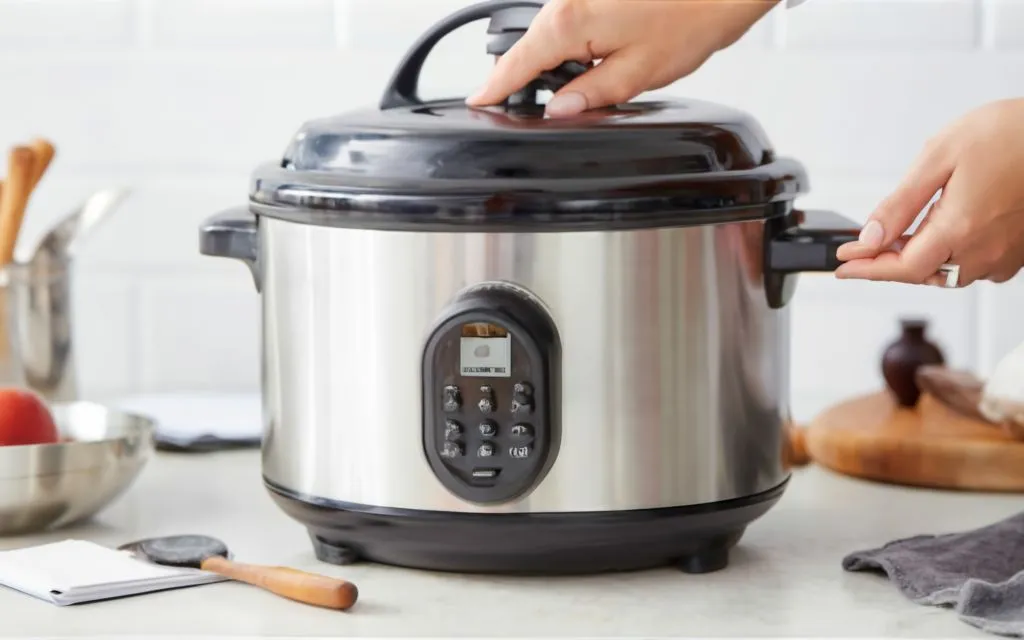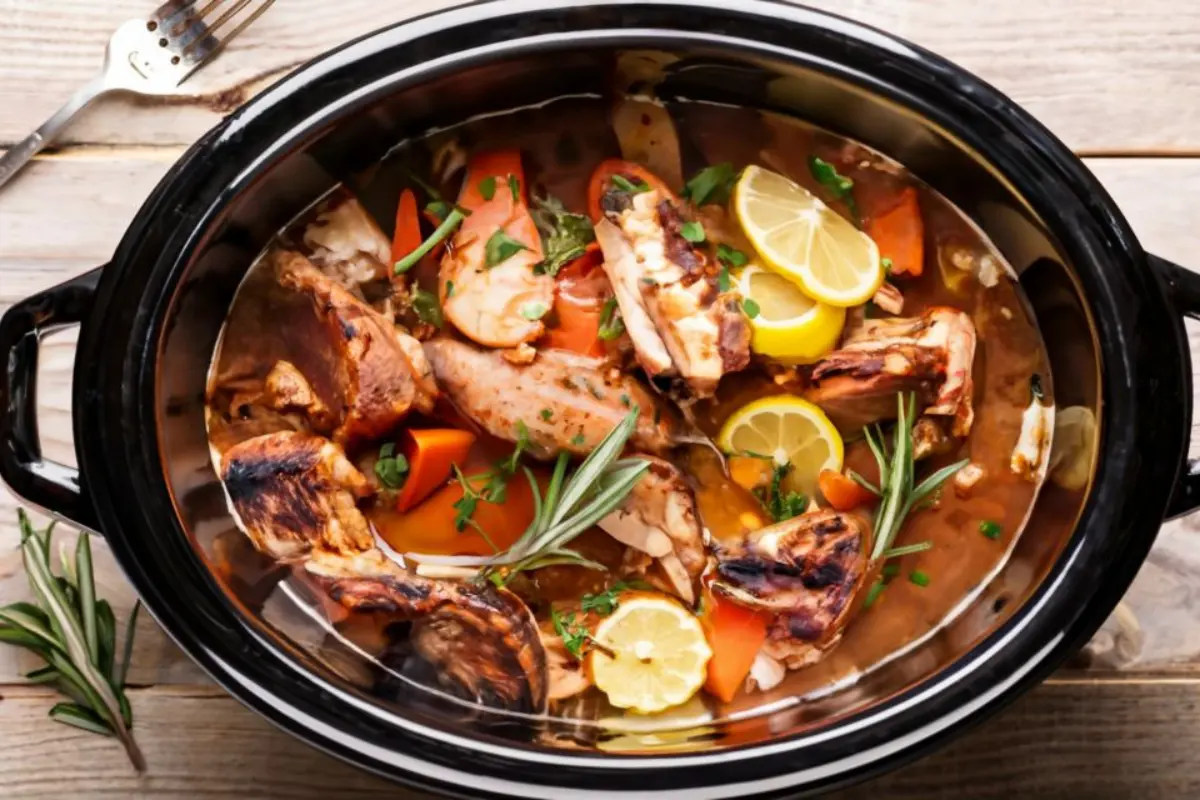Part 1: Introduction to Slow Cooking

Understanding Slow Cooking
Slow cooking, a method that champions both ease and flavor, is much more than just a way to prepare food. It’s a lifestyle choice that transforms simple ingredients into nutritious and delicious meals by cooking them at a low temperature for several hours. This low-and-slow process not only retains vitamins and minerals better than high-heat cooking methods but also enhances the Slowly does it: the benefits of slow cooking, making the slow cooker recipes an indispensable ally for busy professionals, parents juggling multiple responsibilities, or anyone who values the rich tastes that emerge from patient cooking.
Benefits of Using a Slow Cooker
The advantages of employing a slow cooker recipes in your kitchen are vast. Primarily, it stands out as a significant time-saver. Although the cooking process is lengthened, the actual time you spend preparing is minimal. You can easily set your meal to cook in the morning and return home to a dish ready to be enjoyed. Economically, slow cookers are more efficient than ovens, using less electricity and transforming more affordable cuts of meat into tender, flavorful feasts. Its versatility is unmatched, capable of crafting everything from hearty soups and stews to delectable cakes and bread. Furthermore, slow cookers excel in flavor enhancement; the prolonged cooking times allow for the development of deep, complex flavors, elevating each meal into a delightful culinary experience. Read more: Healthy and Safe Meals Using a Slow Cooker
As we delve deeper into the best slow cooker recipes and uncover tips and tricks to enhance your slow cooking, we invite both newcomers and seasoned enthusiasts to join us on this journey. With a focus on simplicity and taste, let’s explore how a slow cooker can revolutionize your cooking routine, promising dishes that are as easy to make as they are satisfying to eat. Discover the versatility of slow cookers with our Marry Me Chicken Tortellini Recipe, a testament to the wide range of dishes you can create
Part 2: Best Dishes to Cook in a Slow Cooker

Exploring the best slow cooker recipes reveals a treasure trove of culinary delights perfectly suited for this cooking method. The pivotal question, “What is best to cook in a slow cooker?” guides us into a realm where flavors, textures, and aromas blend seamlessly, thanks to the gentle and extended cooking process unique to slow cookers. Whether it’s tender meats or robust vegetarian dishes, this section will highlight the recipes that truly exemplify the excellence of slow cooking.
Mastering Meats in the Slow Cooker
The slow cooker’s low and steady heat makes it perfect for transforming meats into tender, fall-off-the-bone masterpieces.
- Tender Beef Recips: Beef dishes, like stews and roasts, become incredibly tender after hours in the slow coker. A quick tip: searing beef before slow cooking enhances its flavor and texture. This method is ideal for tougher cuts, turning them into succulent meals.
- Succulent Chicken Dishes: Chicken cooked in a slow cooker recipes remains juicy and flavorful. Thighs and legs, in particular, fare well, absorbing herbs and spices thoroughly. For best results, layer chicken beneath vegetables, allowing it to cook evenly and soak up flavors. Learn more about selecting the right beef cuts for your slow cooker with our guide on the Best Cut of Beef for Stew
Vegetarian Delights in the Slow Cooker
Vegetarian meals benefit greatly from the slow cooker, with legumes and vegetables absorbing an array of spices and herbs.
- Hearty Vegetable Stews: A mix of vegetables slow-cooked with seasoning becomes a comforting stew. Adding ingredients in stages ensures each vegetable cooks to perfection, maintaining texture and flavor.
- Beans and Legumes Specials: slow cooker recipes excel at cooking beans and legumes to soft perfection. Dishes like chili and lentil soup are not only nutritious but also packed with flavor. Pre-soaking beans can shorten cooking time and improve texture.
Soups and Stews: The Slow Cooker Classics
Soups and stews are staples in slow cooker cuisine, benefiting from hours of simmering to develop deep, complex flavors.
- Comforting Soup Recipes: From chicken noodle to vegetable soup, these dishes become rich and comforting after slow cooking. Adding fresh herbs towards the end preserves their flavor and aroma.
- Rich and Hearty Stews: Thick, hearty stews are ideal for slow cooking. Ingredients meld together beautifully, creating layers of flavor. To thicken stews, a cornstarch slurry can be added in the final stages.
In this exploration of slow cooker recipes potentials, we’ve answered the question, “What is best to cook in a slow cooker?” with a variety of dishes that showcase the appliance’s versatility. Whether you’re preparing meat, vegetarian meals, or classic soups and stews, the slow cooker promises a delicious, hands-off cooking experience that brings out the best in your ingredients.
Part 3: Tips and Tricks for Slow Cooking

Mastering the art of slow cooking goes beyond knowing what is best to cook in a slow cooker? It’s also about understanding how to maximize the potential of this versatile appliance. Here, we’ll share some essential tips and tricks that will elevate your slow cooking game, ensuring every dish you prepare is as delicious as it is effortless.
Maximizing Flavor in the Slow Cooker
The slow cooker’s ability to enhance the flavor of food is one of its most celebrated features. However, a few simple techniques can make a significant difference in the outcome of your dishes.
- Seasoning and Preparation Tips: Seasoning your ingredients well before they hit the slow cooker can dramatically improve the taste of your meals. For instance, browning meat before adding it to the cooker adds depth and complexity to the dish. Moreover, layering your ingredients correctly—placing root vegetables at the bottom where they can absorb more heat—ensures even cooking and flavor distribution.
- Slow Cooking Time Guidelines: Understanding the timing for different ingredients is crucial. While some dishes benefit from an all-day cook on low, others, especially those with delicate ingredients, might only need a few hours on high to reach perfection. Additionally, resist the urge to open the lid frequently, as this can significantly extend cooking times and affect the meal’s temperature.
Slow Cooker Maintenance and Care
To ensure your slow cooker continues to serve you well for years to come, proper maintenance and care are essential.
- Cleaning Your Slow Cooker: Keeping your slow cooker clean is not just about aesthetics; it’s also about performance. Ensure the pot is completely cool before cleaning. Most slow cooker inserts are dishwasher safe, but a gentle hand wash can extend the life of your appliance. For stubborn stains, soaking the insert in warm, soapy water usually does the trick.
- Ensuring Longevity of Your Appliance: Regular checks on your slow cooker’s cord and plug can prevent electrical issues. Additionally, storing your slow cooker in a dry, cool place when not in use protects it from environmental damage. Remember, a well-maintained slow cooker is a reliable companion in your culinary adventures.
Part 4: Frequently Asked Questions About Slow Cooking
Navigating the world of slow cooking can sometimes raise questions, especially for those exploring what is best to cook in a slow cooker. This section aims to shed light on some of the most common queries, providing clear, concise answers to enhance your slow cooking journey.
What Can You Not Cook in a Slow Cooker?
Interestingly, while slow cookers are versatile, they’re not suited for everything. For instance, adding dairy products too early can lead to curdling, and delicate vegetables or certain seafoods might overcook if left too long. Pasta, unless added at the end, often turns mushy.
Can You Put Raw Meat in a Slow Cooker?
Absolutely, raw meat is perfectly fine to cook in a slow cooker. The appliance is designed to cook meat thoroughly over several hours. However, browning meat beforehand can add a depth of flavor and improve texture.
How to Thicken Sauces in a Slow Cooker?
Thickening sauces in a slow cooker is straightforward. A mixture of cornstarch or flour with water, added in the last 30 minutes of cooking, will do the trick, ensuring your sauces are rich and not watery.
Is It Safe to Leave a Slow Cooker On When Not Home?
Yes, it’s safe. Slow cookers are made to operate for extended periods, even when you’re not around. Just make sure it’s on a stable surface and away from anything flammable to prevent accidents.
Can You Overcook Food in a Slow Cooker?
While slow cookers are generally forgiving, overcooking is still possible, especially for dishes that require less liquid or are cooked on high. To avoid this, keep an eye on cooking times and adjust according to the recipe.
By addressing these FAQs, we hope to have clarified some of the common concerns and curiosities about slow cooking. Whether you’re pondering over what is best to cook in a slow cooker or seeking tips for perfecting your slow-cooked meals, these insights aim to empower your culinary adventures, ensuring every dish you prepare is as delightful as anticipated. check out our Slow Cooker Tuscan Chicken Meatballs & Gnocchi recipe
Part 5: Embracing the Slow Cooker Lifestyle
As we wrap up our culinary journey, it’s clear that the slow cooker is more than just an appliance; it’s a gateway to a world of delicious, effortless meals that cater to a wide range of tastes and preferences. The versatility and convenience of slow cooking have been showcased through various dishes, tips, and FAQs, illustrating that the question of what to cook in a slow cooker finds its answer in the limitless possibilities it offers.
Embracing the slow cooker lifestyle means appreciating the simplicity and depth of flavor that comes with slow-cooked meals. Whether you’re a busy professional looking for time-saving cooking methods, a beginner cook exploring easy recipe, or a culinary enthusiast seeking to experiment with new dishes, the slow cooke is your ally in the kitchen.
Moreover, the slow cooker encourages healthier eating habits by preserving nutrients and allowing for the use of whole, unprocessed ingredients. It’s a way to bring families and friends together over comforting meals that require minimal preparation but deliver maximum satisfaction.
In conclusion, the slow cooker stands as a testament to the joy of cooking and eating well. It invites us to slow down, savor the moment, and enjoy the rich, complex flavors that only time can unfold. So, as you continue to explore the wonders of slow cooking, remember that the best dish is the one that brings joy to your table, crafted with love and a touch of patience.
By embracing the slow cooker lifestyle, you open the door to a world of culinary delights that are as rewarding to prepare as they are to share. Here’s to many more slow-cooked meals that warm the heart and nourish the soul.

